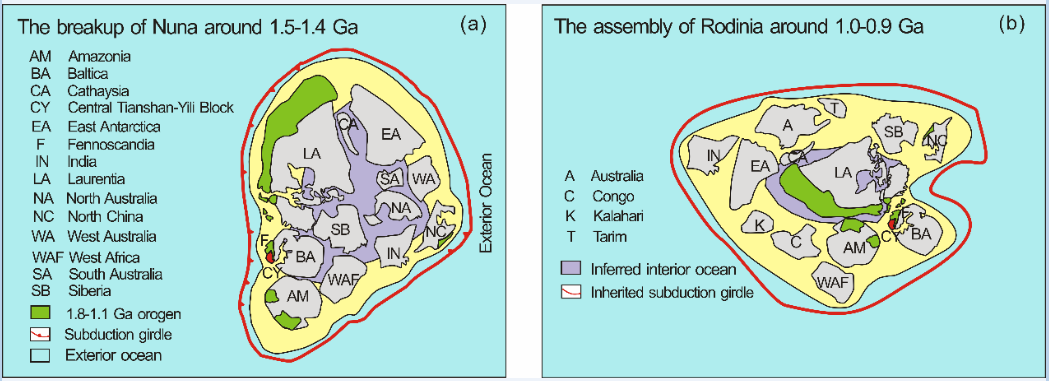The episodic assembly and breakup of supercontinents have significant influences on the evolution of Earth’s crust, atmosphere, hydrosphere and life. One of the key aspects in assessing the influence is to understand the transitional process from the breakup of one supercontinent to the assembly of next one.
Two Proterozoic supercontinents, Nuna (or Columbia, 2.0–1.6 Ga) and Rodinia (1.0–0.9 Ga), have widely attracted the attention of the geological community. However, it remains controversial regarding how Nuna broke up into fragments and how these fragments subsequently re-amalgamated into Rodinia supercontinent.
Recently, researchers from Guangzhou Institute of Geochemistry, Chinese Academy of Sciences (GIGCAS) studied the Neoproterozoic meta-sedimentary rocks from Chinese Central Tianshan Block (CTB) in Xinjiang, Northwest China, to decipher the tectonic process for such a transition combing with data of tens of thousands of sets from sedimentary, magmatic and metamorphic continental blocks all over the world.
Their research shows that the CTB has an affinity with the Fennoscandia in origin. Fennoscandia is currently located in southwest Baltica (Fig. 1), the northern Europe. Palaeomagnetic and geological records have shown that it was on the outer edge of Nuna in the Proterozoic and rafted to the interior of Rodinia in Neoproterozoic. Therefore, the CTB and Fennoscandia contain key information about Nuna-Rodinia Transition.

(Image by HUANG zongying)
Fig.1 The CTB is reconstructed close to Fennosandia (southwest of the Baltica). The transition from Nuna breakup to Rodinia assembly was accomplished by switching an exterior orogenic system into an interior orogenic system.
Researchers from GIGCAS then investigated the isotope data from these two blocks and reveal that the transition from Nuna breakup to Rodinia assembly was accomplished by switching an exterior orogenic system into an interior orogenic one (Fig. 1).
This research has been published on the Tectonics in an article entitled “From Breakup of Nuna to Assembly of Rodinia: A Link Between the Chinese Central Tianshan Block and Fennoscandia” https://doi.org/10.1029/2018TC005471.